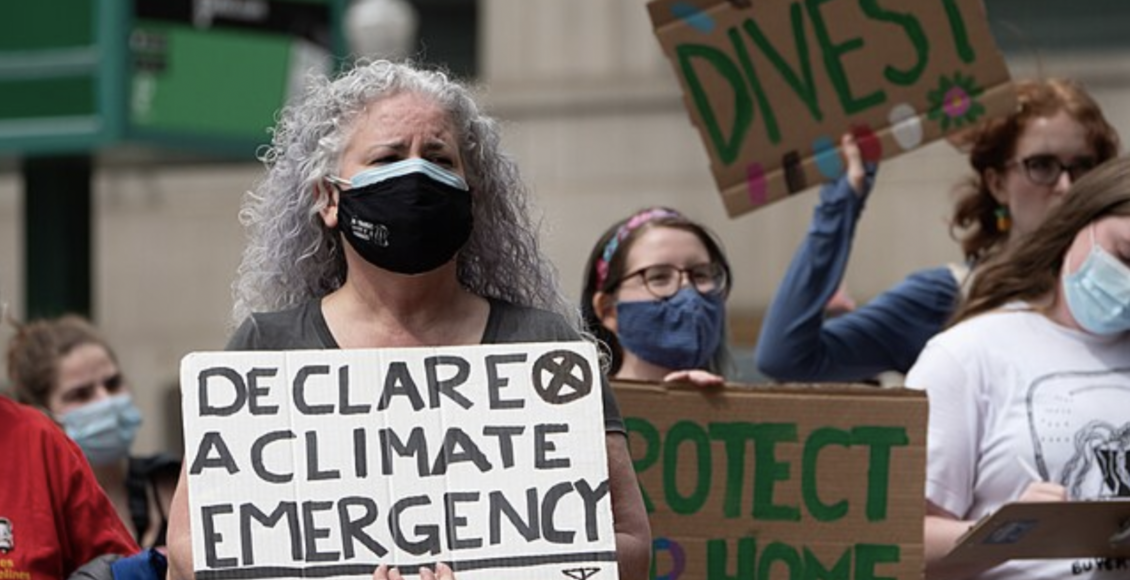Harris and Trump on Climate Policy

In 2021, the United States rejoined the Paris Agreement, committing to an international fight to limit global temperatures to 1.5 degrees above pre-industrial levels. The Intergovernmental Panel on Climate Change noted that while such an effort is scientifically possible, it would require “unprecedented transitions in all aspects of society.” The efficacy of this global response relies heavily on the US as it remains one of the largest contributors to global greenhouse gas emissions. However, the upcoming presidential election may put this undertaking at risk. The two candidates tout drastically different approaches to climate and energy policy, with Harris championing a comparatively greener agenda than Trump.
Harris’s policy would be similar to President Biden’s. She declared at this year’s Democratic National Convention that the right to live free from pollution and contaminated resources is a “fundamental freedom.” Harris intends to incentivize a nationwide switch to green energy, limit pollution from industrial plants, support the Electric Vehicle industry, and uphold the Inflation Reduction Act (IRA).
The IRA is considered the single largest action taken by the US to address climate change, investing $386 billion USD in clean energy through tax incentives and climate justice grants. In 2022, the US Office of Management and Budget estimated that the IRA would reduce carbon pollution in the country by 40 per cent by 2030. So far, the Biden administration has been making steady progress towards this goal. The White House recently revealed that since January 2024, companies have announced over $900 billion USD in clean energy investments. As a result, the IRA has been deemed the “crown jewel” of the Biden administration’s industrial policy by experts such as Josh Bivens at the Economic Policy Institute. Bivens believes that the IRA has managed to set the US in the right direction, one where the country now has a “genuine chance at securing a livable planet for future generations.”
Harris, however, is still a major proponent of fracking. This stance marks a decisive policy contradiction, since she proclaimed in a 2019 town hall that “there’s no question I’m in favour of banning fracking.” In fact, Harris’s 2020 presidential campaign featured a $10-trillion-USD-plan which would effectively ban fracking. After becoming President Biden’s running mate, she abandoned this position. During the 2024 presidential debate, Harris stated, “I will not ban fracking. I have not banned fracking as Vice President of the United States. In fact, I was the tie-breaking vote on the Inflation Reduction Act, which opened new leases for fracking.”
Environmentalists largely support Harris, despite her endorsement of fracking, which harms the environment. Scientists from the Intergovernmental Panel on Climate Change assert that the use of fossil fuels obtained through hydraulic fracturing “needs to be drastically cut if the world is to avoid the worst impacts of climate change.”
Robert Rapier, an energy sector expert at Forbes, regards the debate over a fracking ban as moot because Congressional approval would be necessary to ban fracking. Rapier explains that political candidates like Harris will make statements to appeal to their voter bases above all else, making it difficult to distinguish whether their support is sincere or merely political pandering.
Using data from previous presidencies, researchers at the Dutch bank ING Group have predicted that US oil output will hit record highs regardless of who is in the White House.
Former President Donald Trump, on the other hand, rejects the reality of climate change altogether. In 2018, he responded to his own administration’s report on unchecked global warming by declaring, “I don’t believe it.” Earlier in 2010, he tweeted: “The concept of global warming was created by and for the Chinese in order to make U.S. manufacturing non-competitive.”
During his presidency, Trump made the decision to withdraw from the Paris Agreement, a legally binding treaty meant to limit global emissions. This move was featured as a part of his 2016 election platform. The former president argued that the treaty was biased against the US, limiting the nation’s carbon use while allowing countries such as China and India to freely use fossil fuels in their manufacturing processes. Trump also asserted that the agreement would cost the US over 2.5 million jobs by 2025.
Luke Kemp, an environmental policy expert at Australian National University, agreed that it was in the US’s best interest to leave the Paris Agreement. Kemp held that, contrary to concerns that a US pullout would prompt a domino effect, such an effect “may actually be heightened if the United States remains in the agreement as a laggard, weakening the compact from within.”
US greenhouse gas emissions fell under Trump, but not enough to stave off the devastating effects of climate change, according to some analysts. Environmental policy researcher Trevor Houser attributes this to the steep recession in 2020, not to Trump’s policies.
While the United States continued importing foreign oil during his presidency, Trump encourages domestic oil production and deregulation of drilling, as reflected by his use of the 2008 Republican campaign slogan, “drill, baby, drill.” During his presidency, the US became the largest oil producer in the world. Proponents praise Trump-era oil deregulations for increased cost savings; critics argue that his rollbacks on drilling restrictions only weakened crude prices and left dozens of oil companies bankrupt.
While climate policy may not sway the nation’s choice this November, many US voters still place immense importance on the issue. In a survey conducted by Yale’s Program on Climate Change Communication, over one third of respondents identified themselves as “pro-climate voters,” meaning they consider global warming very important to their vote and thus prefer a candidate who supports climate action. The United States’ success in limiting global warming to 1.5 degrees may lie in the hands of these voters.
Edited by Clare Rowbotham
Featured Image: “2022 Climate Strike” by Mark Dixon, published on April 22, 2022, is licensed by CC 2.0.
